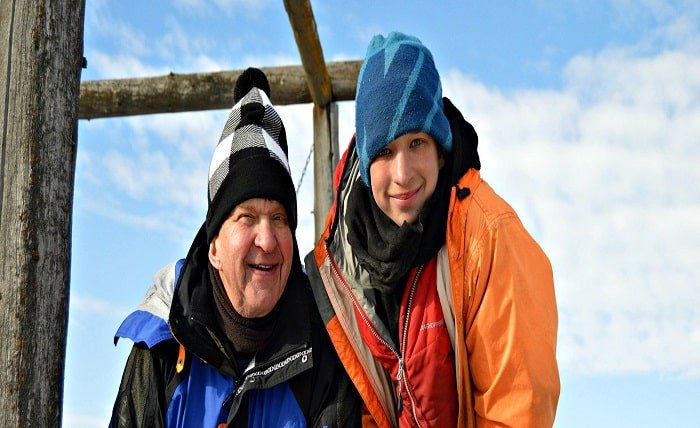The Struggles of Bluefire Wilderness: Unveiling the Abuse and its Impact

Introduction
The phrase “Bluefire Wilderness abuse” may not be widely known, but it speaks to a deep-rooted issue affecting both the environment and the people who are affected by it. Bluefire Wilderness refers to a region marked by its natural beauty and diverse ecosystem, yet it is also a space where exploitation and abuse have taken place. From mismanagement of resources to unethical practices, this abuse has led to serious consequences. This article delves into the problem of Bluefire Wilderness abuse, its causes, and how it continues to impact the area and its inhabitants.
What is Bluefire Wilderness?
Bluefire Wilderness is a region located in a remote, largely untamed area known for its dense forests, rugged terrain, and pristine waterways. The region has long been a destination for adventurers, conservationists, and those seeking refuge in nature. Its rich biodiversity and ecological significance make it a valuable part of the global environmental landscape. However, it has also become a focal point of exploitation, with various forms of abuse occurring within its borders.
The term “bluefire wilderness abuse” refers to the way in which both natural resources and individuals working or living in the area are subjected to unethical practices. These include over-harvesting of timber, pollution, and even human rights abuses linked to local industries operating in the region. By examining these abuses, we can begin to understand the magnitude of the issue and the urgent need for intervention.
The Roots of Bluefire Wilderness Abuse
To understand the extent of Bluefire Wilderness abuse, we must first look at its origins. The exploitation of this area can be traced back to a number of factors, including poor management, lack of regulation, and an increasing demand for its natural resources. In many cases, industries have sought to extract resources from the region without considering the long-term environmental or social consequences.
One major factor contributing to the abuse of Bluefire Wilderness is illegal logging. Despite regulations that aim to protect the forests, illegal logging continues to occur, leading to deforestation and loss of biodiversity. Additionally, the region is rich in minerals and other natural resources, prompting companies to exploit the land without regard for environmental preservation or the well-being of local communities.
The Human Cost of Bluefire Wilderness Abuse
While much of the discussion around Bluefire Wilderness abuse centers on the environment, the human cost cannot be ignored. Local communities, often indigenous or low-income, are disproportionately affected by the exploitation of their land. Many people have been displaced from their ancestral homes, with their livelihoods and cultures threatened by industrial activities. These individuals often face poor working conditions, inadequate pay, and a lack of basic human rights protections.
The abuse of Bluefire Wilderness also manifests in the form of forced labor. In some areas, workers are subjected to dangerous working conditions, long hours, and little to no compensation. The illegal nature of many of these operations leaves workers vulnerable, with no legal recourse to fight for their rights. This exploitation of human resources is a form of abuse that is deeply embedded in the history of Bluefire Wilderness.
Environmental Damage and Degradation
One of the most significant aspects of Bluefire Wilderness abuse is the environmental degradation it has caused. Over-harvesting of timber, the destruction of wildlife habitats, and pollution have all contributed to the decline of the region’s natural beauty. Bluefire Wilderness was once home to a variety of species, some of which are now endangered due to habitat destruction and poaching. The region’s waterways have also been heavily polluted by mining and industrial activities, further threatening local wildlife.
As these abuses continue unchecked, the long-term effects on the environment are devastating. The loss of biodiversity, soil erosion, and water contamination are just a few of the consequences that threaten the future of Bluefire Wilderness. These environmental issues are compounded by climate change, which is making the region even more vulnerable to exploitation.
The Role of Corporations in Bluefire Wilderness Abuse
Corporations have played a significant role in the abuse of Bluefire Wilderness. While some businesses claim to follow ethical guidelines, the reality is that many have exploited the region for profit without regard for its long-term health or the well-being of the local population. The lack of transparency and accountability in these industries makes it difficult to hold them responsible for their actions.
In many cases, these corporations operate in collusion with local governments, offering bribes or other incentives to overlook environmental violations. This creates a vicious cycle where abuse continues unchecked, and the people who suffer the most are those living closest to the land.
Efforts to Combat Bluefire Wilderness Abuse
Efforts to combat bluefire wilderness abuse have been ongoing, but progress has been slow. Various environmental organizations have worked tirelessly to raise awareness about the issues facing the region, calling for stronger regulations and better enforcement of existing laws. Additionally, local communities have organized protests and legal challenges to protect their rights and the land they call home.
Some corporations have also made efforts to adopt more sustainable practices, but these actions are often motivated by public pressure rather than a genuine desire to protect the environment. In many cases, corporate commitments to sustainability are vague and lack the concrete actions needed to make a real difference.
The Future of Bluefire Wilderness
The future of Bluefire Wilderness remains uncertain. Despite the challenges, there is hope that increased awareness and advocacy will lead to meaningful change. The region’s natural beauty and ecological importance make it a key focus for environmental conservation efforts. By working together, both local communities and environmental organizations can push for the protections needed to preserve the wilderness for future generations.
There is also potential for corporations to play a more positive role in the region’s future. By embracing sustainable practices and being held accountable for their actions, businesses can help mitigate the impact of past abuses and contribute to a healthier, more sustainable Bluefire Wilderness. However, this will require a collective effort from all stakeholders, including governments, corporations, and individuals.
Conclusion
Bluefire Wilderness abuse is a complex issue that encompasses environmental destruction, human rights violations, and corporate exploitation. From illegal logging to forced labor, the impact of these abuses has been felt by both the land and the people who rely on it. Despite the challenges, there is hope that through advocacy, stronger regulations, and a shift towards sustainability, we can mitigate the damage done and protect Bluefire Wilderness for future generations. The journey is long, but with continued effort, change is possible.
FAQs
- What is Bluefire Wilderness? Bluefire Wilderness refers to a remote, ecologically rich area known for its forests, terrain, and waterways. It has become a focal point for exploitation and abuse.
- What types of abuse have occurred in Bluefire Wilderness? The abuse includes illegal logging, forced labor, pollution, and over-exploitation of natural resources.
- Who is affected by Bluefire Wilderness abuse? Local communities, particularly indigenous groups, and the environment are most impacted by the abuse in Bluefire Wilderness.
- What can be done to stop the abuse in Bluefire Wilderness? Increased awareness, stronger regulations, and more sustainable practices by corporations are essential to address the abuse.
- Is there hope for Bluefire Wilderness to recover? Yes, with continued advocacy and responsible management, there is hope for the future of Bluefire Wilderness.




